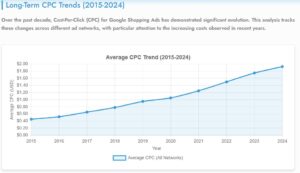Pagination is a fundamental element of website navigation, especially for content-heavy sites like e-commerce stores, blogs, and directories. Proper pagination improves user experience (UX), ensures seamless browsing, and contributes to better search engine optimization (SEO). At Rank Fuse Digital Marketing, we recognize the importance of well-structured pagination and its impact on usability and search engine visibility.
In this article, we explore best practices for implementing effective pagination, ensuring your site remains user-friendly and search-engine-friendly.
What Is Website Pagination?
Website pagination is the process of dividing content into separate pages to make it more manageable and accessible. Common examples include:
- Product listings on e-commerce sites
- Blog archives
- Search results pages
Pagination helps reduce load times, avoids overwhelming users with excessive content, and organizes information into digestible chunks.
Why Pagination Matters
Effective pagination offers several key benefits:
- Improved User Experience: Simplifies navigation and reduces decision fatigue by breaking down content into smaller sections.
- Enhanced SEO Performance: Proper pagination ensures search engines can crawl and index pages efficiently.
- Faster Load Times: Reduces the amount of data loaded on a single page, especially for image-heavy content.
Best Practices for Website Pagination
To create an effective pagination system, consider these best practices:
1. Use SEO-Friendly Pagination Markup
Pagination can create duplicate content issues if not handled properly. Follow these guidelines to avoid SEO pitfalls:
- Canonical Tags: Use canonical tags to indicate the preferred version of paginated URLs.
- Rel=”next” and Rel=”prev”: These tags signal to search engines the relationship between paginated pages, improving crawl efficiency.
- Descriptive URLs: Avoid generic URLs like
example.com/page1. Instead, use descriptive URLs such asexample.com/products?page=1to improve clarity.
2. Offer Clear Navigation
Pagination links should be easy to understand and interact with. Consider the following:
- Highlight Active Pages: Clearly indicate the current page to help users orient themselves.
- Provide Previous and Next Buttons: Enable seamless navigation between pages.
- Display Page Numbers: Allow users to jump to specific pages if they wish.
Example: A clean pagination design might look like this:
<< Previous | 1 | 2 | 3 | 4 | Next >>
3. Avoid Infinite Scroll Without Proper Alternatives
Infinite scroll is popular for social media feeds and some e-commerce platforms, but it’s not always the best option for SEO or usability. If you use infinite scroll:
- Include a Pagination Alternative: Provide numbered pagination links to ensure content is crawlable.
- Lazy Load Content: Load additional content only when users scroll close to the bottom of the page.
- Test Usability: Ensure infinite scroll doesn’t hinder users from reaching the footer or key information.
4. Optimize for Mobile Users
Mobile users often face challenges with poorly implemented pagination. Ensure your pagination system is mobile-friendly by:
- Using Large Tap Targets: Make links easy to click.
- Simplifying Design: Reduce clutter to enhance readability on small screens.
- Testing Responsiveness: Verify pagination works seamlessly across devices.
5. Minimize Duplicate Content
Search engines may view paginated pages as duplicate content if they contain similar metadata or thin content. To mitigate this:
- Avoid Repeating Content: Don’t duplicate introductory text or product listings across pages.
- Use Structured Data: Implement schema markup to provide additional context for search engines.
6. Balance Page Length and Content Volume
Pagination should provide enough content to engage users without overwhelming them. Consider:
- Page Load Times: Keep pages lightweight for faster performance.
- Content Balance: Display a reasonable number of items per page, such as 10-20 products or articles.
7. Implement Breadcrumb Navigation
Breadcrumbs complement pagination by providing hierarchical navigation. They help users and search engines understand the site structure.
Example:
Home > Category > Subcategory > Page 2
Technical SEO Tips for Pagination
Pagination involves technical considerations to ensure search engines understand your content structure. Here are some tips:
1. XML Sitemap Updates
Include all paginated pages in your XML sitemap to guide search engines to every piece of content. This is particularly useful for deep content archives.
2. Noindex Low-Value Pages
If paginated pages add little value (e.g., duplicate or thin content), consider adding a noindex tag to prevent them from appearing in search results. However, ensure they remain accessible for users.
3. Load Balancing for Server Performance
Large-scale pagination can strain servers. Optimize server resources by:
- Using caching strategies
- Implementing content delivery networks (CDNs)
- Compressing images and scripts
Case Study: Improving Pagination for an E-Commerce Client
Client: A mid-sized online retailer specializing in home decor.
Challenge:
- Users frequently abandoned product category pages due to confusing pagination.
- Crawlers struggled to index deep product pages.
Solution:
- Simplified pagination design with clear “Previous” and “Next” buttons.
- Implemented
rel="next"andrel="prev"tags. - Increased the number of products displayed per page from 10 to 20 for a better browsing experience.
- Enhanced mobile usability by adding swipe-friendly navigation.
Results:
- 28% increase in average session duration.
- 18% higher crawl efficiency reported in Google Search Console.
- 12% uplift in conversion rates due to improved navigation.
Conclusion: The Importance of Thoughtful Pagination
Effective pagination bridges the gap between user needs and search engine requirements. By focusing on clarity, usability, and technical optimization, businesses can improve user engagement, enhance SEO performance, and drive conversions.
At Rank Fuse Digital Marketing, we specialize in designing and optimizing websites that meet the needs of both users and search engines. Whether you need help with pagination, SEO strategy, or UX design, our team is here to support your goals.
Contact us today to learn more about how we can enhance your website’s performance!





